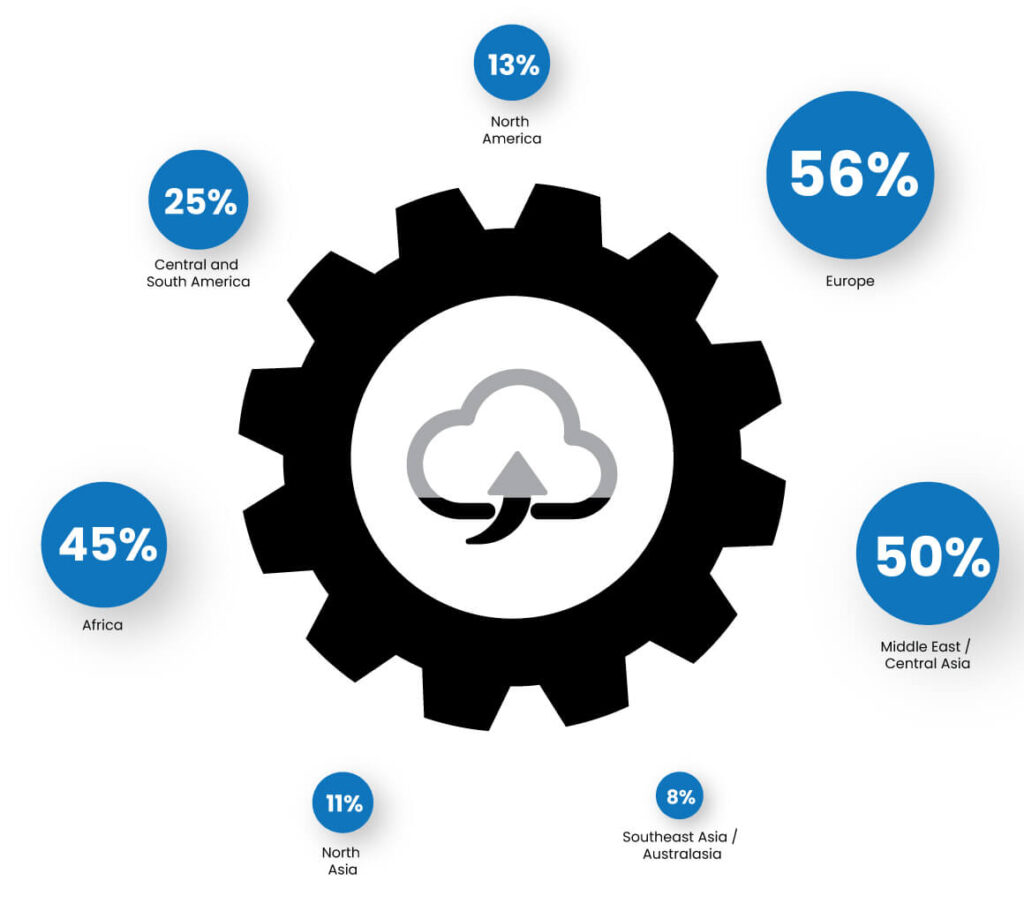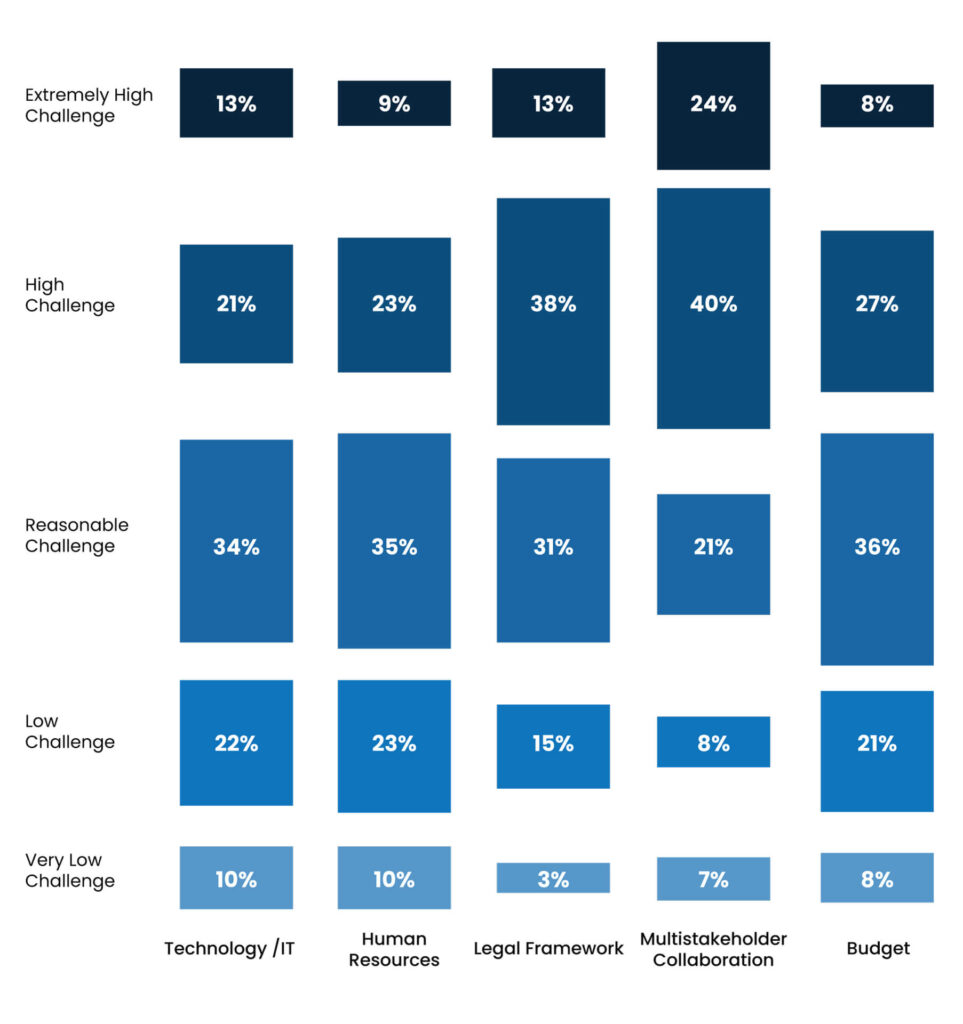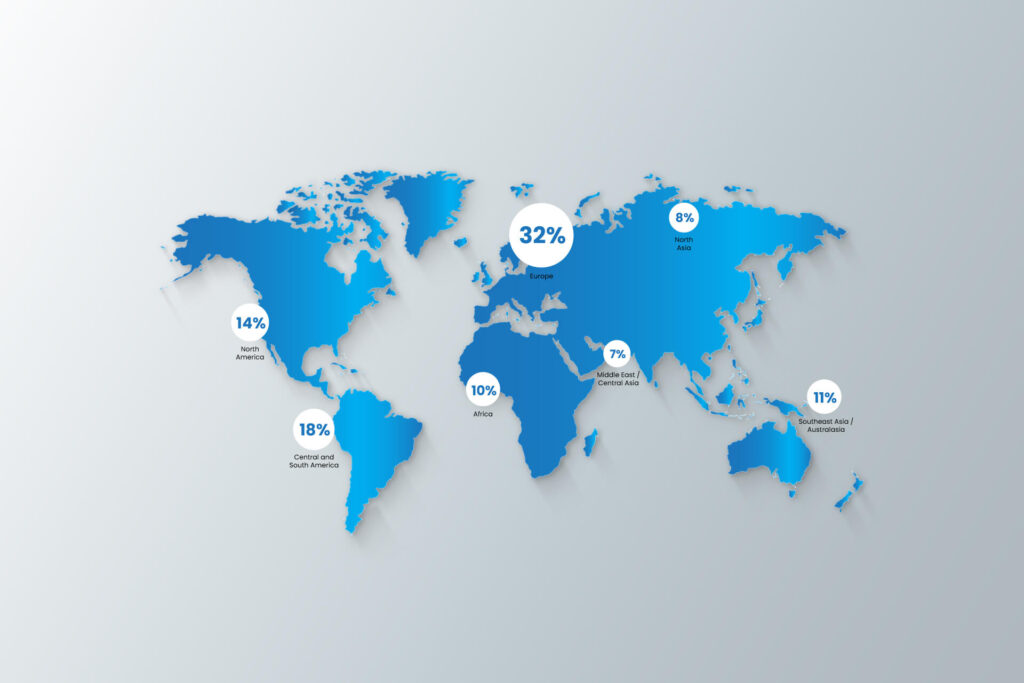March/April 2021 | IAPHworldports.org | Vol 66 No°2
A newly published IAPH survey on transmitting facilitation data electronically has shown that only one-third of respondents have corresponding systems in place. P&H looks at what the challenges behind implementing a digital maritime paper trail are INES NASTALI AND IAPH DATA COLLABORATION COMMITTEE
On 8th April 2019, the IMO Convention on Facilitation of International Maritime Traffic (FAL Convention) made it mandatory for national governments to introduce electronic information exchange between ships and ports. The COVID-19 pandemic has shown that the maritime industry urgently needs to establish these networks and issued several calls to authorities to do so.
However, a recent IAPH survey into the matter showed that about a third of the global sample of ports has not commenced the process of implementing respective electronic data exchange systems, and for those that have, another third is either designing or implementing their system with only the final third being operational.
“The major barriers to conform with the FAL requirement for electronic data exchange are twofold: first, multi-stakeholders’ interests in port communities and established practices and cultures need to be addressed to enable the sharing and reuse of data, which is the key for achieving efficient electronic reporting and clearance of vessels, cargo, crew, and passengers.” IAPH stated in its report.
“Second, the legal framework is a barrier, as it can frequently depend on competing or overlapping public administrations and governmental agencies at municipal, state, or national level.”
The survey was supervised by the IAPH Data Collaboration Committee that brings together experts from some of the world’s most advanced ports in terms of digitalization with the aim of supporting the wide-ranging adoption of secure electronic data exchange in ports.
The confidential survey took place in October 2020 and was open to all ports. It received 111 valid responses from port authorities and port operators worldwide. The response by port type, size, modus operandi vis-à-vis cargo, and passenger traffic, as well as in geographical spread was sufficiently diverse to represent a worldwide sample of ports.
Respondents by region where operational systems exist

Right : Looking at the regional analysis of the results, very significant variations can be observed on the degree of implementation and the maturity level of electronic data exchange systems in different parts of the world. As illustrated, Europe leads the implementation, and this is to be expected owing to the application of relevant legislation at the level of the European Union (2010/65/EU) since 2015. Despite the advanced presence of this same Eu legislation, it appears that several European countries continue to face challenges in implementing electronic data systems to comply with the FAL requirement.
The Middle East/Central Asia and Africa appear to do quite well comparatively, but caution is required in interpreting these outcomes owing to the smaller number of respondents in these regions. The Americas and many parts of Asia and Oceania appear to be notably lagging behind.
Challenges (Total number of port respondents: 97)

Right : The survey’s responses provide a clear insight into the reasons behind the current low level of compliance with the FAL requirement on electronic data exchange. “We have a significantly high rate of valid survey responses – 87% – from ports that point to two main barriers of implementation, namely multi-stakeholder collaboration and legal framework.” The IAPH said.
Nearly two-thirds of ports rate the first as a high or extremely high challenge. The latter was rated by more than 51% of all ports with the same two high challenge scores.
These clearly overshadow other categories that are typically perceived as hurdles to achieve progress in any IT endeavour at a port, namely technology, budget, or human resources.
One of the major outcomes of the last eight weeks of intensive work of the WPSP Covid19 Task Force is the very urgent need for ports to digitalize processes and data exchanges as we move towards a post-COVID19 modus operandi. Exchanging paper by hand and relying on person-to-person interaction simply doesn’t cut the mustard anymore, neither from a safety nor efficiency standpoint
IAPH Managing Director | Patrick Verhoeven
Data Upload
Which data needs to be transmitted electronically since April 2019 ?
The FAL Convention includes in its Standard 2.1 a list of documents that public authorities can demand from a ship and recommends the maximum information that should be required. Public authorities shall not require additional information. For all the data sets below, and for only those, national governments are required to implement systems for enabling their electronic transmission as of 8 April 2019. The aim is to facilitate the clearance of vessels, cargoes, passengers and crew.
- IMO General Declaration (FAL form 1)
- Cargo Declaration (FAL form 2)
- Ship’s Stores Declaration (FAL form 3)
- Crew’s Effects Declaration (FAL form 4)
- Crew list (FAL form 5)
- Passenger List (FAL form 6)
- Dangerous Goods (Fal form 7)
Three additional declarations entered into force on 1 January 2018 :
- Security-related information as required under SOLAS regulation X1-2/9.2.2
- Advance electronic cargo information for customs risk assessment purposes
- Advance notification form for waste delivery to port reception facilities.
Two other documents may be required under the Universal Postal Convention and the International Health Regulations.



Comments are closed.